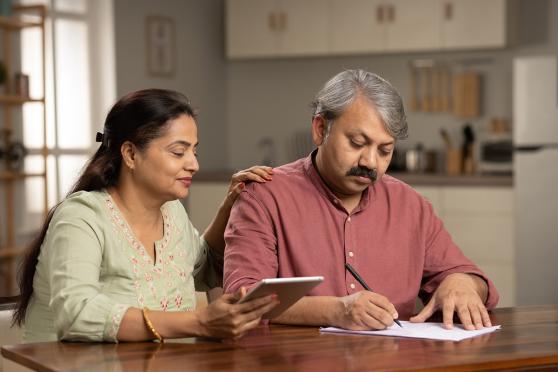Five simple ways to keep your blood pressure in check
Managing high blood pressure doesn’t have to feel overwhelming. From staying on top of meds to simple lifestyle tips, here’s how to keep your numbers in check.

High blood pressure is called a “silent killer” because it often has no symptoms. And although nearly half of Americans have it, most are unaware, according to the American Heart Association (AHA). Over time, untreated high blood pressure can put you at risk of serious health issues, such as heart attack, stroke, vision loss, and kidney disease.
Reassuringly, health problems don’t have to be your fate: You can take action to manage your blood pressure. The first step? Knowing your numbers. Don’t wait; schedule an appointment with your primary care doctor and have your blood pressure checked.
The next step? Using these expert tips to manage your blood pressure. Here’s what you need to know.
1. Take your medications as prescribed
Medications that control your blood pressure work best when you take them every day, according to the AHA. If your doctor has prescribed two or more blood pressure drugs or you’re on a drug for another condition, take everything exactly as directed. Let your doctor know all the prescription and nonprescription medications you’re taking (including vitamins and supplements). Some medications can be less effective or even dangerous when combined.
2. Simplify your medication routine
Consider using a pillbox that organizes your medications by day of the week and time of day. If possible, take your meds at the same time as other routine daily activities, such as when you make your morning coffee or when you feed a pet. Or set an alarm on your clock, phone, or computer. And don’t forget to keep your medications together in one place, out of reach of children.
Another pro tip: Ask your pharmacy to automatically refill your prescriptions. The easier it is to get and manage your medications, the more likely you’ll be to take them regularly.
3. Make feel-good changes
As with most conditions, leading an active, healthy lifestyle will be one of your best medicines. Incorporate these changes into your life:
- Eat a well-balanced diet that’s low in salt. When you can, cook at home (foods you eat while dining out are often high in sodium). And fill up on plenty of fruits, veggies, whole grains, and lean protein.
- Enjoy more movement. Being active strengthens your heart. And the stronger your heart is, the more blood it can pump with less effort, which lowers the pressure in your arteries. Aim to move for at least 30 minutes each day. And look for ways to reduce the amount of time you’re sedentary.
- Limit alcohol. Follow the CDC guidelines and stick to just one drink a day or less for women and two for men.
- Manage stress. Easier said than done, right? But it is possible. Talk to your doctor about what strategies may be right for you.
- Quit smoking. If you smoke, come up with a game plan to quit. (Your wallet and your health will thank you.)
4. Keep up with blood pressure checks
The best way to know how well your efforts are working? Checking your blood pressure. If it’s back at a healthy level (below 120/80 mm Hg), the AHA recommends being screened by your doctor at least once every two years. If it’s higher, your doctor may want to check your blood pressure more often, or even have you check it yourself and record the readings at home. Remember: Knowledge is power. So, follow your doctor’s guidance. And don’t be afraid to bring up any concerns along the way.
Understand your numbers
Your blood pressure is composed of two numbers:
- Systolic (top number), the pressure in your arteries when your heart beats
- Diastolic (bottom number), the pressure in your arteries when your heart is resting between beats
Here’s what the numbers mean, according to recent AHA guidelines. Your doctor may recommend lifestyle changes or medication to help control your blood pressure.
Normal
- Systolic: Less than 120
- Diastolic: Less than 80
Elevated
- Systolic: From 120 to 129
- Diastolic: Less than 80
High stage 1
- Systolic: From 130 to 139
- Diastolic: From 80 to 89
High stage 2
- Systolic: At least 140
- Diastolic: At least 90
Remember that your blood pressure changes throughout the day, so small variations are likely to occur. What you’re looking for during at-home readings is whether you start trending higher. Hypertension is diagnosed when your blood pressure is consistently high.
5. Don’t stop meds on your own
You’re taking your medications, you’re making healthy changes, and your blood pressure stabilizes. Amazing! But don’t stop taking your medicine. When people with high blood pressure miss their medications regularly, even after their levels are healthy again, their risk of a stroke or heart attack increases. Always talk to your doctor before making any adjustments.
Finally, be an active part of your health care team. You know yourself better than anyone. So, be open with your doctor about your concerns, questions, and what adjustments you can make to live your life to the fullest.


